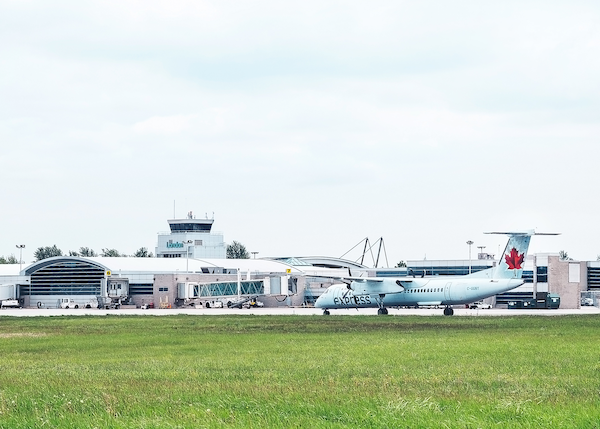
Canada’s London International Airport is steadily rebuilding and expanding its route network after the pandemic, with new routes being opened both domestically and to foreign leisure destinations.
Routes to major cities such as Calgary, Edmonton and Winnipeg have been introduced this year and new or resumed routes to a cluster of Caribbean destinations have also been announced.
London international lies around 100 miles southwest of Toronto, in the southernmost tip of Ontario, and roughly equidistant from Detroit and Buffalo just over the U.S. border.
London International’s president and CEO, Scott McFadzean, says the airport has a catchment area of around 2.5 million residents. Most are Canadian, “but we do get some U.S. passengers, mainly in the summer months, because it’s easier to connect domestically to places like Vancouver or Halifax through a Canadian airport than a US one.”
Passenger traffic at London International is seasonal, with domestic destinations more popular in summer and southern sunshine destinations in winter, as Canadians escape cold temperatures for a week or two.
McFadzean is forecasting 400,000 passengers this year, still down on its typical pre-pandemic totals of around 500,000. The airport posted a record 683,000 travelers in 2019, because of the presence of new LCC, Swoop. However, Swoop is now being folded into parent Westjet.
Air Canada and Westjet are London International’s two main carriers, together with Air Transat, Sunwing and LCC Flair.
The airport’s shortest service is the roughly 100-mile hop to Toronto Pearson, which is handled by Air Canada regional partner Jazz using Bombardier CRJ200s. McFadzean says there are good reasons for flying, rather than driving, such a short distance.
“A lot of people don’t enjoy driving on Highway 401, which is North America’s most dangerous highway,” he notes. Apart from safety concerns, the road can also become extremely congested, which can throw out the plans of passengers heading for Pearson.
Other factors in London International’s favor for the short flight are that passengers arrive at Pearson airside, having completed security checks in the more relaxed surroundings of London International
“Mainly it’s driven by the passenger experience,” says McFadzean. “We call ourselves ‘the easy and comfortable airport.’ We have cheaper parking [than Pearson], closer to the terminal. And you don’t have to arrive three hours before departure; here, it’s 1 hour – or 30 minutes if you don’t have luggage.”


